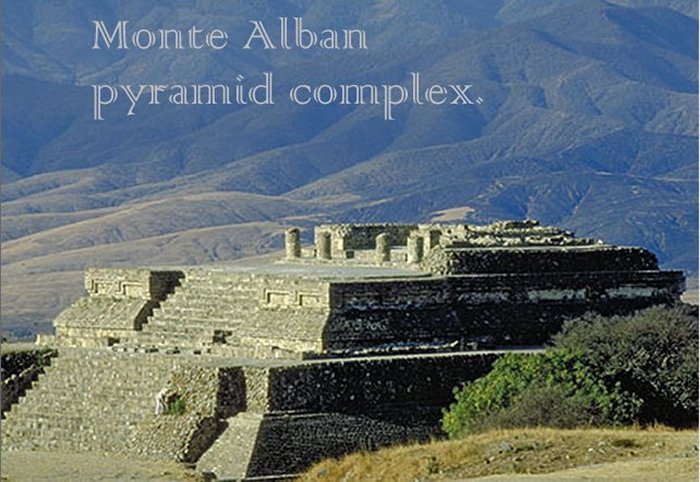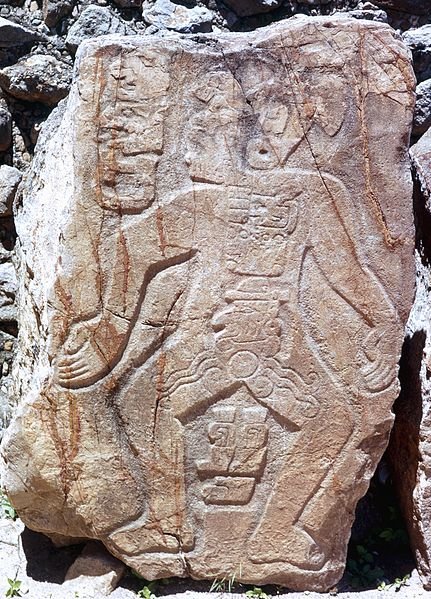Mystery Of Monte Albán – Ancient City ‘At The Foot Of The Heavens’ Built By The Zapotecs
A. Sutherland - AncientPages - Almost two thousand years ago, the Zapotec people built the city at the top of the mountain.
This mysterious city, probably about 3000 years old, stands on a vast artificially flattened hilltop overlooking Oaxaca.
Monte Albán (in Spanish: White Mountain) was the first capital of the Zapotecs, the 'city of temples' - the second-largest ceremonial center in Mexico after Teotihuacan.
How did the Zapotecs transport gigantic slabs, each weighing tens of tons and other stone blocks?
The Zapotecs did not have machines and wheels or other metal tools, but somehow they managed to raise these heavy stones. In some way, they cut off the tip of the mountain, forming a vast plain approximately the size of 60 football fields. The plain has been perfectly leveled, forming a perfect plateau, very similar to that at Giza.
Why did they choose this particular place?
The site consists of a huge rectangular area, the Grand Plaza, enclosed by groups of pyramids and other buildings laid out in precise geometrical relationships. It gives the appearance of being a place of harmony. Its proportion emerges from a well-ordered and symmetrical plan.
Enigmatic stone carving at Monte Alban. Credit: HJPD - CC BY 3.0
We are confronted with many mysteries regarding Monte Albán, and among them are several dozen impressive reliefs known as the 'Dancers' Gallery showing slaves or perhaps war captives, according to archaeologists, who see ‘the corpses of prisoners captured in battle.’
Were they really prisoners, and where did the alleged battle take place?
It has also been suggested that the figures represent shamans or people with some magic powers. Some of these figures include glyphs and numbers that have been interpreted as names and calendar dates.
Probably deciphering hieroglyphic script - that represents ‘the earliest-known writing in Mexico,’ experts say - is the only way to identify the strangers on the stone blocks of Monte Albán.
The Zapotecs were accomplished builders and more than usually preoccupied with astronomy and mathematics.
They built a strange, arrowhead-shaped observatory, and its location "corresponds perfectly to a north-south axis. The single exception to this is a structure known as the astronomy observatory, which has the shape of an arrow and is positioned at a 45-degree angle.
The observatory is pointed toward the star Alnilam - the central star of Orion's belt, and the ancient name for Monte Albán is 'Sahandevui' and means 'at the foot of the heavens'.
But why was this particular location chosen for a building of the structure? It is challenging to approach the mountain because it is very steep and dangerous for climbing... There is no source of water, and it was never used for residence.
Moreover, the building material used for the construction of these magnificent pyramids is not located anywhere nearby,' writes Sam Osmanagich in the 'The World of the Maya'.
'We really do not know why or when Monte Albán was built,' said American archaeologist, Richard Blanton who has devoted many years to research the development of civilizations in pre-Columbian Mesoamerica and Monte Albán state.
See also:
Dzibilchaltún: One Of The Most Ancient Mayan Centers In Northwest Yucatan, Mexico
Also, the abandonment of Monte Albán at the beginning of the year 900 AD is rather mysterious but clearly related to the disappearance of the Maya.
Perhaps the undeciphered hieroglyphics on the stone blocks depicting the so-called 'dancers" could help to answer some of the most important questions regarding the region.
Written by – A. Sutherland AncientPages.com Staff Writer
Updated on July 13, 2021
Copyright © AncientPages.com All rights reserved. This material may not be published, broadcast, rewritten or redistributed in whole or part without the express written permission of AncientPages.com
Expand for referencesReferences:
Urcid, J. Knowledge, Power, And Memory in Ancient Oaxaca
Unesco
More From Ancient Pages
-
 Unexplained Mystery Of The Untraceable Stone-Throwers – Strangeness In Australia And New Zealand – Part 2
Featured Stories | Nov 13, 2019
Unexplained Mystery Of The Untraceable Stone-Throwers – Strangeness In Australia And New Zealand – Part 2
Featured Stories | Nov 13, 2019 -
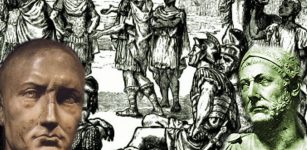 Scipio Africanus – Rome’s Greatest General Who Defeated Unbeatable Hannibal
Featured Stories | Aug 5, 2021
Scipio Africanus – Rome’s Greatest General Who Defeated Unbeatable Hannibal
Featured Stories | Aug 5, 2021 -
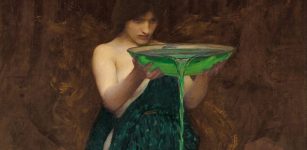 Circe: Powerful Divine Sorceress Who Mastered Healing, Miracles And Transforming People Into Animals In Greek Mythology
Featured Stories | Aug 12, 2023
Circe: Powerful Divine Sorceress Who Mastered Healing, Miracles And Transforming People Into Animals In Greek Mythology
Featured Stories | Aug 12, 2023 -
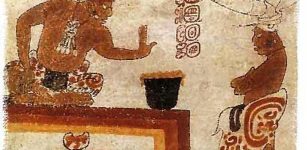 Ancient Maya Sacred Groves Of Cacao Trees – Located
Archaeology | Jan 31, 2022
Ancient Maya Sacred Groves Of Cacao Trees – Located
Archaeology | Jan 31, 2022 -
 DNA Analyses Suggest The Plague Contributed To Stone Age Farmers’ Decline
Archaeology | Jul 10, 2024
DNA Analyses Suggest The Plague Contributed To Stone Age Farmers’ Decline
Archaeology | Jul 10, 2024 -
![Microscopy picture of a dividing basal radial glial cell, a progenitor cell type that generates neurons during brain development. Modern human TKTL1, but not Neandertal TKTL1, increases basal radial glia and neuron abundance. Credit: Pinson et al., Science 2022 / MPI-CBG Left: Microscopy picture of a dividing basal radial glial cell, a progenitor cell type that generates neurons during brain development. Modern human TKTL1, but not Neandertal TKTL1, increases basal radial glia and neuron abundance. [less] © Pinson et al., Science 2022 / MPI-CBG; Right: Anneline Pinson is a researcher in Wieland Huttner's group. © MPI-CBG](https://www.ancientpages.com/wp-content/uploads/2022/09/Brain12Neurons-307x150.jpg) Modern Humans Generate More Brain Neurons Than Neandertals
Human Beginnings | Sep 8, 2022
Modern Humans Generate More Brain Neurons Than Neandertals
Human Beginnings | Sep 8, 2022 -
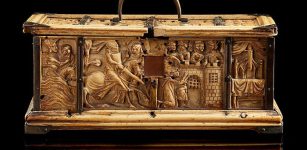 Extremely Rare 700-Year-Old French Gothic Ivory Casket At Risk Of Leaving The UK
Archaeology | Dec 7, 2022
Extremely Rare 700-Year-Old French Gothic Ivory Casket At Risk Of Leaving The UK
Archaeology | Dec 7, 2022 -
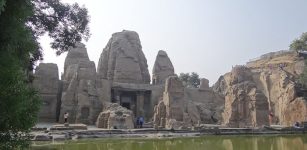 Masroor Temples – India’s Marvelous Ancient Cave Temples
Featured Stories | Jan 23, 2016
Masroor Temples – India’s Marvelous Ancient Cave Temples
Featured Stories | Jan 23, 2016 -
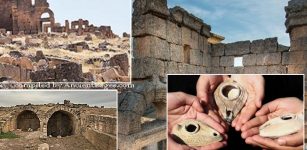 1,500-Year-Old Ancient Lamps Unearthed In Zerzevan Castle In Southeast Turkey
Archaeology | Nov 25, 2019
1,500-Year-Old Ancient Lamps Unearthed In Zerzevan Castle In Southeast Turkey
Archaeology | Nov 25, 2019 -
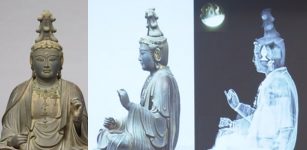 Mysterious Scrolls And Artifacts Discovered Inside Ancient Buddha Statuette
Archaeology | May 9, 2018
Mysterious Scrolls And Artifacts Discovered Inside Ancient Buddha Statuette
Archaeology | May 9, 2018 -
 Inchbrayock Stone: Pictish Samson Stone Carved With Biblical Symbols And Scenes
Artifacts | Jan 21, 2019
Inchbrayock Stone: Pictish Samson Stone Carved With Biblical Symbols And Scenes
Artifacts | Jan 21, 2019 -
 Breakthrough! Evidence Of Previously Unknown Prehistoric Humans Who Lived In Europe More Than 1.1 Million Years Ago!
Evolution | Mar 13, 2025
Breakthrough! Evidence Of Previously Unknown Prehistoric Humans Who Lived In Europe More Than 1.1 Million Years Ago!
Evolution | Mar 13, 2025 -
 On This Day In History: Germany Invades Poland – On Sep 1, 1939
News | Sep 1, 2016
On This Day In History: Germany Invades Poland – On Sep 1, 1939
News | Sep 1, 2016 -
 DNA From Mysterious Hominin In China Suggests Native Americans’ East Asian Roots
Archaeology | Jul 14, 2022
DNA From Mysterious Hominin In China Suggests Native Americans’ East Asian Roots
Archaeology | Jul 14, 2022 -
 Strange Encounter With A Supernatural Being In The 1790s
Ancient Mysteries | Jan 12, 2020
Strange Encounter With A Supernatural Being In The 1790s
Ancient Mysteries | Jan 12, 2020 -
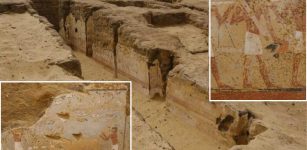 Old Kingdom Mastaba Decorated With Rare Paintings Found In Dahshur Necropolis, Egypt
Archaeology | Mar 22, 2024
Old Kingdom Mastaba Decorated With Rare Paintings Found In Dahshur Necropolis, Egypt
Archaeology | Mar 22, 2024 -
 Huge Lost Ancient Underground City Of Samen Finally Reveals Its Secrets
Archaeology | Apr 28, 2017
Huge Lost Ancient Underground City Of Samen Finally Reveals Its Secrets
Archaeology | Apr 28, 2017 -
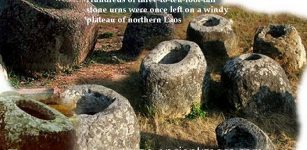 Mysterious Jars In Laos – Long-Lasting Mystery Is Still Unsolved
Archaeology | May 20, 2019
Mysterious Jars In Laos – Long-Lasting Mystery Is Still Unsolved
Archaeology | May 20, 2019 -
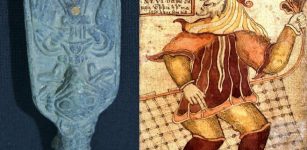 Rare Discovery Of Ancient Artifact Depicting Norse God Loki In Denmark Remains A Mystery
Archaeology | Jan 4, 2017
Rare Discovery Of Ancient Artifact Depicting Norse God Loki In Denmark Remains A Mystery
Archaeology | Jan 4, 2017 -
 13th Century Black Book Of Carmarthen: Erased Poetry And Ghostly Faces Revealed By UV Light
Artifacts | Apr 4, 2015
13th Century Black Book Of Carmarthen: Erased Poetry And Ghostly Faces Revealed By UV Light
Artifacts | Apr 4, 2015

